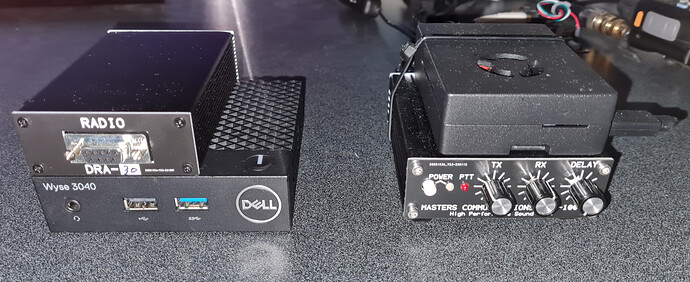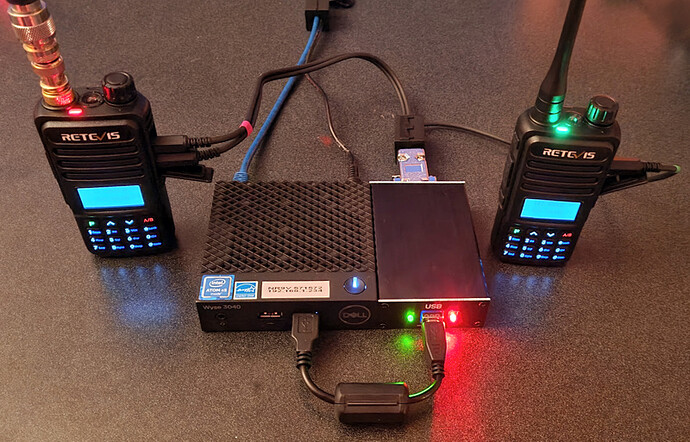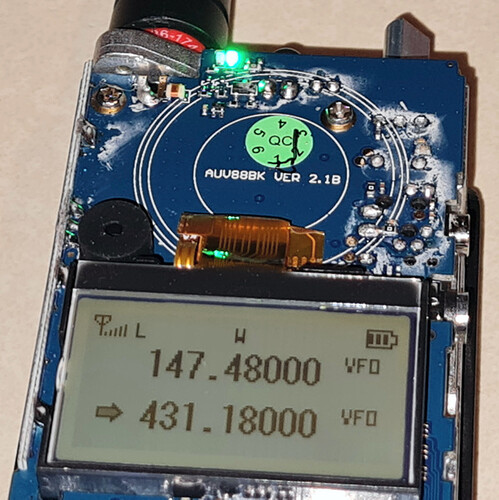After having a ClearNode for a few months, and having been a EE and Audio Engineer for decades, I have decided to build my own node, that will use high-quality radios, support full-duplex and use a professional-grade audio interface, rather than continue with the poor audio and RF performance of the ‘Nice RF’ modules used in most nodes such as the SHARI, etc., which all have very noticeable and distinctive buzz/whine/EFI/RFI and frequent ‘clunk’ type of noises on both their Rx and Tx audio.
For the audio interface I ordered a Masters Communications DRA-100 which sounds like it should have super low noise and be very easy to adjust the audio levels with the front panel knobs.(They’re a bit pricey and maybe a Kits for Hams DINAH would work nearly as well for 1/3 the price, but initially I’d rather not have any potential weak links in the system.)
For radios I plan to use a couple of HTs such as Yaesu FT-65s as they should work very well and are cheap but should last a lot longer than Chinese brands. For the COS input line I’m going to stick a photodiode on the receive HT’s RX LED and run that into a comparator circuit. I may alternatively at some point switch to a mobile radio such as a Yaesu FT-8800R or Kenwood TM-V71A, which do cross-band full-duplex and have the 6-pin Mini DIN connector, but using a couple HTs should be cheaper and more self-contained.
My first question is what is the best, lowest-cost computer device to use. I could just get an RPi 3B/4 with a metal case and fan as that seems like the most standard and simple option, however it seems those are all sold out at conventional suppliers and are all being scalped for higher prices, ie. at least twice what they are supposed to cost, $150+ by the time you add the case, fan, heatsinks, power supply, micro-port-adapters, SD Card, etc. Are there better options? It doesn’t need to be super-compact, it will just sit in a closet in my house, so I’d probably be fine with any old micro-PC or any other platform similar to RPi.
Questions:
-
It seems there are only 2 image downloads for ASL, one for RPi and one for Intel-AMD. There does not seem to be a lot of documentation on hardware requirements / OS details. Is ASL only available as a complete monolithic image that includes the OS and all drivers, or can it be separately installed on any Debian system?
-
If I were to get a micro/mini-PC that had a small SSD and I installed the latest Debian on it could I then just install the ASL files to a folder and run it that way? Or is better to just get a small Intel/AMD SBC and put in a bootable SD Card with the ASL image?
-
Does anyone have any recommendations for a good SBC that is in the < $200 range and should work as well or better than a RPi 3B/4? I’d think I’d want 4GB RAM, high-quality metal case with low-noise fan, ethernet jack, (no built-in wifi needed), HDMI jack, a few USB ports, and power supply.
If RPi is in fact the most cost-effective approach, what’s the best place to get one? Amazon seems to be way overpriced but I do see some bare RPi 4’s on ebay for a little over $100
Thanks,
David NR9V





